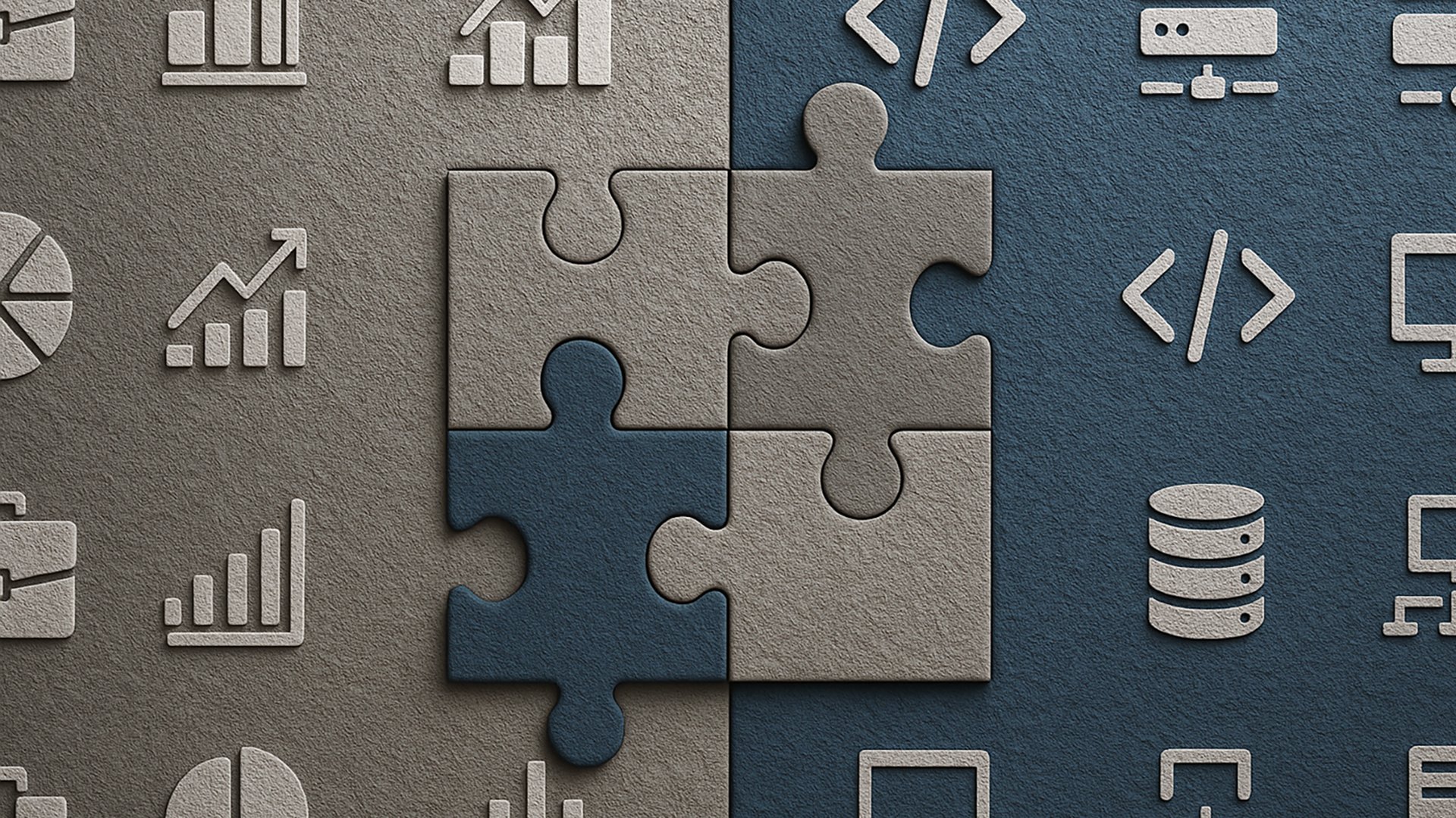Conquering Technical Debt & Legacy Systems: A Roadmap to Modernizing Your Digital Foundation
Tired of technical debt and legacy systems? Discover a roadmap to modernizing your digital foundation. Learn how to conquer IT challenges with insights from Liferay and Veriday experts, covering everything from ROI to headless APIs.

The weight of technical debt and the challenge of modernizing legacy systems can feel like an insurmountable obstacle, but it doesn't have to be. Recently, Liferay and Veriday teamed up for a joint webinar, "Modernizing Your Digital Foundation: Conquering Technical Debt & Legacy Systems," to provide a roadmap for navigating these challenges.
The session featured two experts from the Liferay ecosystem: Erica Gnajek, a Senior Solution Architect at Liferay, and Sam Hyland, the Vice President of Professional Services at Veriday. The conversation was rich with insights, practical strategies, and real-world examples to help organizations transition from disparate systems to a unified, integrated digital foundation.
Understanding the Core Challenges
Sam Hyland kicked off the conversation by outlining the four most common challenges he observes when organizations begin their modernization journey.
-
Organizational inertia and risk aversion. Organizations often take an "if it isn't broke, don't fix it" approach to technical debt. Sam highlighted that although this mindset might seem safe, it puts companies at a competitive disadvantage, as more agile competitors will inevitably pull ahead. The risk of not modernizing—like facing higher costs or being forced into a hurried project due to a critical security issue—is often greater than the challenges associated with modernization.
-
Technical challenges and "unknown unknowns." Sam stressed the importance of organizations understanding their current technology landscape. He shared an example of a major insurance customer Veriday worked with who faced undocumented legacy integrations. The real risk, he noted, is not the known technical hurdles, but the "unknown unknowns" that can derail a project.
-
Resourcing and skill gaps. Sam noted that internal stakeholders sometimes push back on deploying newer technologies because of a fear that their teams lack the necessary skills. However, teams are often excited and interested in upskilling. Furthermore, this thinking is short-sighted, because over time niche technologies become more expensive and harder to find resources for, while newer skills become more readily available.
-
Aligning technical decisions with business goals. Sam emphasized that every technical decision must be tied to a business goal. This alignment ensures that modernization efforts are not just about refactoring code for its own sake, but about driving tangible value, whether it's through operational gains, faster time-to-market, or improved customer satisfaction.
Liferay's Architectural Approach to Modernization
Erica Gnajek, drawing on her experience as an enterprise architect, spoke about how Liferay's platform is specifically designed to address these challenges. She explained how Liferay DXP can act as a unified presentation layer, bringing together disparate systems and data, effectively acting as a central hub for a unified digital platform.
-
Modular and incremental modernization. Erica highlighted Liferay's modular and extensible architecture, which eliminates the need for organizations to "rip and replace" existing technology investments. By leveraging Liferay Objects and Client Extensions, companies can strategically decouple functionalities, build new experiences on top of existing data, and gradually retire legacy components. This minimizes risk and disruption, delivering a modern façade without needing to rebuild their entire backend.
-
Robust integration framework. To combat the "unknown unknowns" of legacy systems, Liferay provides a robust integration framework that supports a wide array of standards and protocols, including REST APIs, GraphQL, and even proprietary APIs. This flexibility is crucial because, as Erica noted, "legacy landscapes are rarely uniform."
-
Headless capabilities and APIs. Erica explained that Liferay's headless APIs are a significant advantage for organizations that need to rapidly deliver new digital experiences without getting bogged down in back-end complexities. This approach allows companies to modernize their front-end experiences while keeping core business logic in legacy systems, decoupling the presentation layer from the data source.
Veriday's Methodologies for Identifying and Prioritizing Technical Debt
Sam explained that, when it comes to tackling technical debt, the key is to show the value of addressing that debt, as "refactoring" can become a "dirty word" to business stakeholders. Veriday's methodology involves a repeatable process that prioritizes high-impact, low-effort areas.
-
Establishing a baseline. Veriday uses tools like Application Performance Management (APM) and static code analysis tools like SonarQube to establish a quality baseline. This provides a metric to track improvement and a number the client "never wants to go below again.”
-
Mapping business and technology. The next step is to understand the business workflows, where revenue is generated, and what areas are critical to customers. Veriday then overlays this with a technical architecture review, looking for single points of failure, outdated technology, and other risk factors.
-
Building a heat map. By combining the business and technical analysis, Veriday creates a "heat map" that shows hotspots where business value and technical risk overlap. This allows them to prioritize their work, addressing high-impact areas with low technical complexity first.
Strategies for a Unified Digital Foundation
Both Sam and Erica emphasized the importance of moving from fragmented systems to a unified digital foundation, often described as a "single pane of glass.” They provided specific strategies and best practices for achieving this.
Sam’s Strategies from Veriday's Perspective
-
A top-down and bottom-up approach. Sam described a two-pronged strategy. The "top-down" approach involves setting a strong architectural foundation and patterns for the organization, such as a "strong experience system" to hide back-end complexity from customers while modernization happens. The "bottom-up" approach is about progressive enhancement, where developers leave the code better than they found it and continuously build on the established quality baseline.
-
Decoupling customizations. Sam stressed the importance of moving customizations away from the core of platforms like Liferay DXP or ERP systems. This prevents challenges with future upgrades and maintenance.
-
API-first development. By building APIs with future use cases in mind, Veriday helps customers avoid major development efforts down the road, turning a major new project into a small enhancement.
Erica's Liferay Features for the "Single Pane of Glass"
-
Centralized content and digital asset management. Liferay's Asset Libraries allow organizations to centralize all content—documents, images, videos—regardless of its original source. This content can then be easily managed from a single interface and reused across various touchpoints.
-
Robust user and identity management. A frequent pain point for users is remembering multiple logins. Liferay's customizable Single Sign-On (SSO) capabilities, which integrate with standards like LDAP and SAML, allow users to log in once and seamlessly access various applications.
-
Widgets and fragments architecture. This architecture, combined with headless APIs, enables companies to display information and functionality from disparate systems on a single Liferay page. Erica provided a powerful example of a financial institution pulling data from a legacy system for account balances, a newer CRM for customer service, and a third-party loan application into one unified dashboard.
Justifying ROI: The Stakeholder Perspective
The final segment of the webinar focused on the "elephant in the room": justifying ROI. Sam and Erica both spoke about how to demonstrate tangible value to different stakeholders within an organization.
Sam’s Approach to ROI
-
Different metrics for different stakeholders. Sam highlighted that a CFO looks at ROI from a cost perspective, a CTO focuses on risk mitigation, and a business leader is most interested in operational improvements. Veriday tailors its approach to each group. For business leaders, Veriday points to operational gains like streamlining inventory management for an electronics retailer. For CTOs, the focus is on mitigating risk and avoiding costs associated with downtime or security vulnerabilities. For CFOs, the conversation centers on long-term cost improvements, such as reduced time-to-market and increased customer satisfaction driving revenue.
Erica’s Perspective on ROI
-
Reduced Total Cost of Ownership (TCO). Erica pointed out that Liferay's modularity and reusability reduces custom development costs and maintenance overhead. She shared that some customers have reported reductions in operational costs of up to 30% by consolidating their digital operations. She also cited the example of Klabin, who leveraged Liferay PaaS to handle maintenance and overhead, further reducing TCO.
-
Increased operational efficiencies. The "single pane of glass" experience directly translates to improved employee productivity. Erica shared the example of a regional development bank in Latin America that saw a 16% increase in user session times after consolidating their public portal and intranet onto a single platform.
-
Accelerated innovation and time-to-market. Erica cited Unilever, a company that achieved 133% faster go-to-market and could respond more quickly to market shifts and customer sentiment by leveraging Liferay DXP.
Conclusion: The Path Forward
The webinar concluded with a strong message: the risk of not modernizing is often greater than the challenges of modernization. By adopting a strategic approach that combines a flexible platform like Liferay DXP with a proven methodology from partners like Veriday, organizations can successfully conquer technical debt and build a unified, agile digital foundation that drives measurable business outcomes.
From a modular architecture and headless APIs to a focus on TCO and operational efficiency, the path to modernization is no longer about a risky "rip and replace" overhaul. It's a journey of continuous, incremental improvement that aligns technology with core business goals, ensuring that companies can not only compete but thrive in the digital age.
To access the complete discussion, and learn about the use cases cited, please visit HERE. To learn more about how Veriday and Liferay work together to deliver results for customers, please visit HERE.
